What Will I Learn?
In this tutorial, reader:
- will learn basics of DC sweep
- will learn implementation of DC sweep on Caneda
- will be more familiar with the software
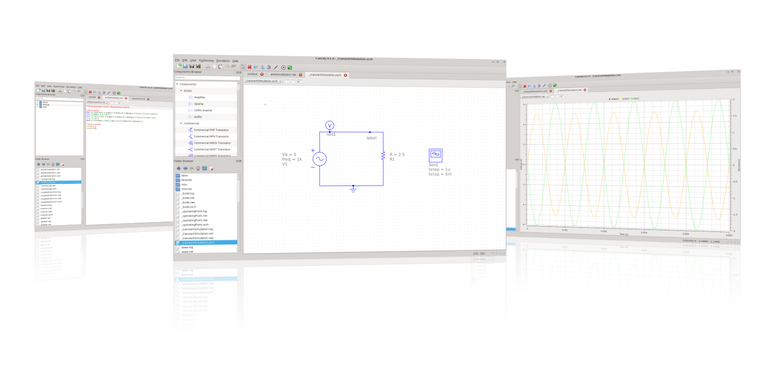
Requirements
To complete the tutorial, readers would have:
- basic knowledge about circuit design
- basic knowledge about Caneda software
Difficulty
- Basic
Tutorial Contents
In this tutorial, I am going to explain "DC Sweep" on circuit software "Caneda". I will start with describing DC Sweep, then build a simple diode circuit in the software and add necessary elements to operate DC sweep, and a last step I will do simulation and analyze it in details. Let me start with description.
- Episode 1: What is DC Sweep and how it works?
DC Sweep is a powerful technique which is based on changing a DC value from one point to another with a given increment. This techniques have been done on simulation programs and help the engineers understand the behaviour of the circuit in more and more detail. Also by using this method, operation point which circuit responds best can be found easily.
Technically speaking, the reader will determine a DC source as "Parameter" such that this DC source is to be changed according to given voltage values and increment rates.
DC Sweep technique is very popular in characterization of the circuits.
- Episode 2: Construction of diode circuit on software
In this tutorial, I have more basic circuit comparing the previous tutorials. I have explained the basics of circuit construction on my previous tutorial, so I will skip the basic steps.
Circuit that I am going to construct is a modified version of the circuit given below:
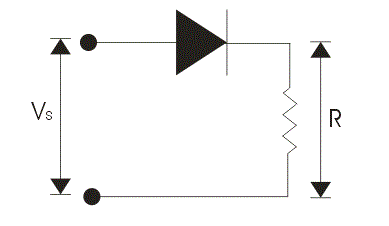
I will add a parallel line which has a reversed version of diode and same resistance. The overall circuit should look like:
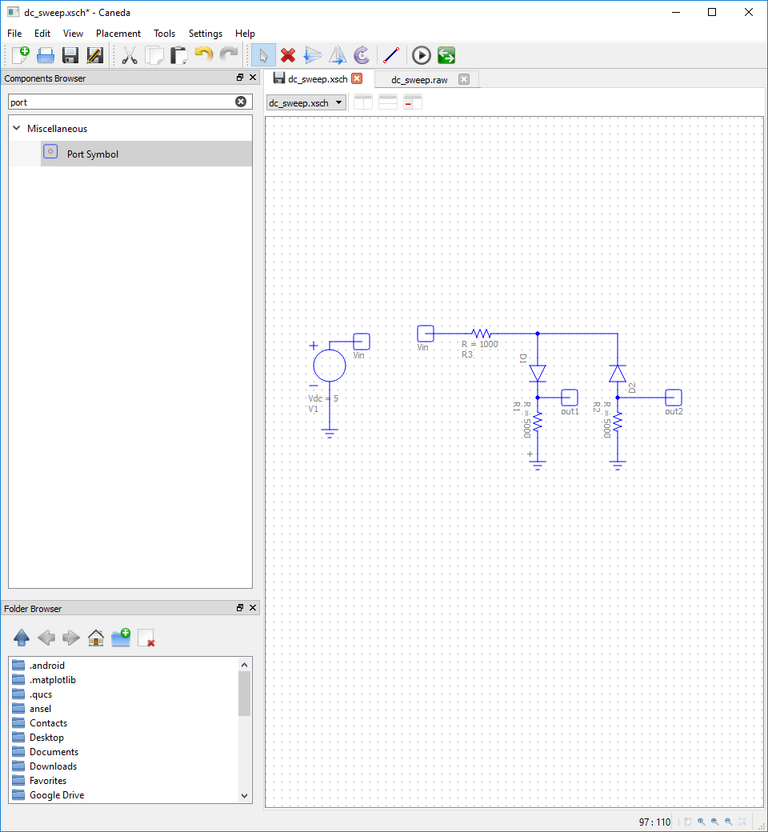
We are almost ready for the analysis. Next step is to add "DC Transfer Function" under "Simulations" in "Components Browser" as shown below:

When reader double clicks the "DC Transfer Function" component, window that we need to adjust for the simulation appears.

In this window:
"increment" is the basic intrement value for each step.
"source" is the name of the source that we will sweep.
"start" is the start value for the analysis.
"stop" is the end value for the analysis.
("Please note that software supports for 2 more different DC sweep simultaneosly, parameters in the name of [xxxx 2] function as same as [xxxx]")
The tricky part here is to define source. To define "V1" as source, reader should write "VV1" to value of source parameter. Without correct adjusting of parameters, simulation will not work.
I have fixed start voltage as -5V , stop voltage as 5V and increment as 00.25 as shown below:
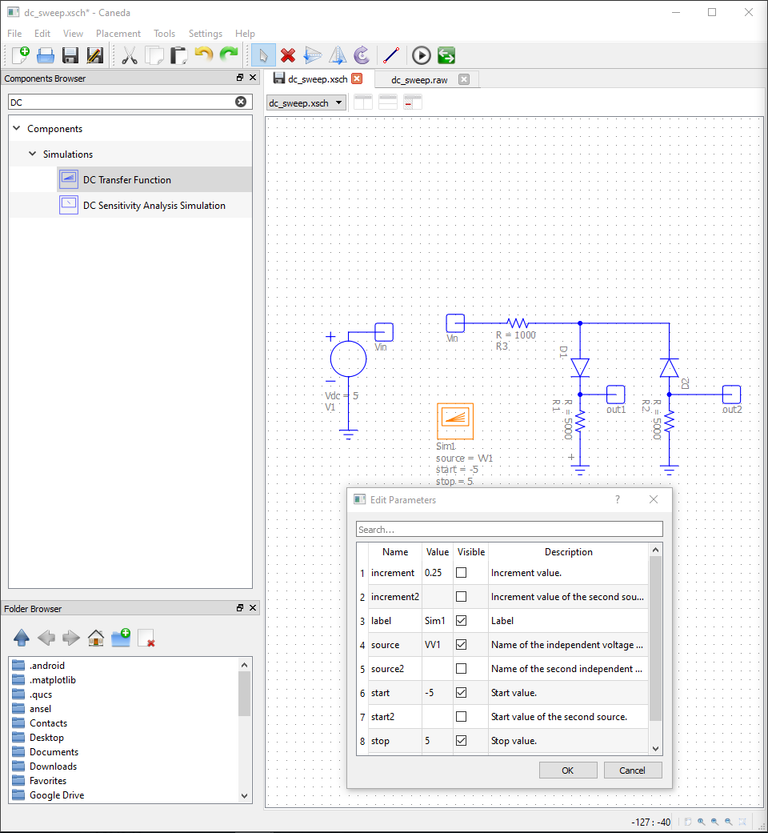
- Episode 3: Simulation of the circuit
In order to simulate the circuit, reader just needs to save the file and click simulation button.I am going to analyze some characteristics & results of the simulation. Results that I have obtained is here:
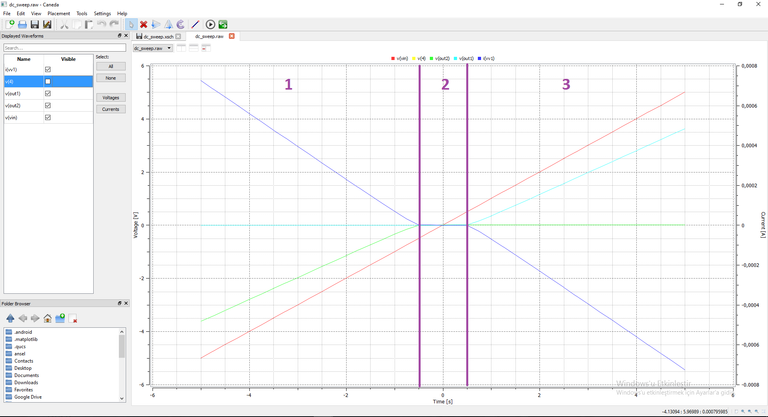
In this graph;
Blue Line indicates the current on DC Source
Red Line indicates the voltage on DC Source
Cyan Line indicates the voltage on Port Out1
Green Line indicates the voltage on Port Out2
When we observe red line it is obvious that we have managed to obtain DC sweep characteristics, since input voltage starts with -5V and goes to 5V with our increment rate.
Note that I have divided the simulation result into 3 different parts, since each part have different characteristics. Lets analyse them one-by-one
1 : We can see that voltage is negative and vout1 is zero, so our circuit in this range is:(vout 1 is open circuited)

2: We can see that both vout1 and vout 2 are zero, so our circuit in this range is:(vout1 and vout2 are both open circuited)
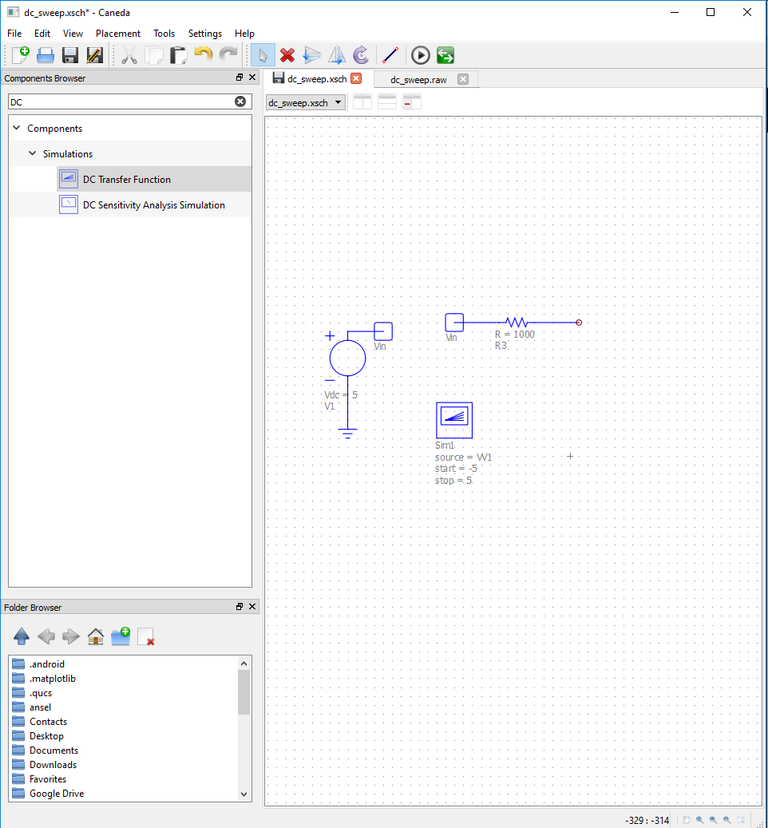
3 : We can see that voltage is positive and vout2 is zero, so our circuit in this range is:(vout 2 is open circuited)
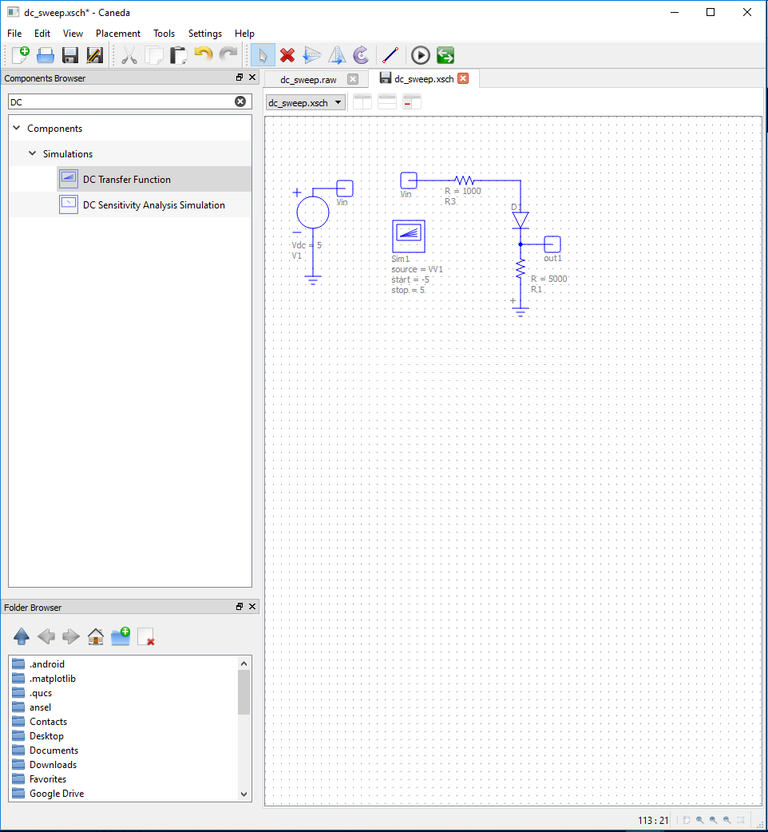
And as a last one, we can say that opening voltage of the diodes are 1V for this circuit since, after this value we are changing working intervals.
I have proven that circuit works as we desire, so we have managed to operate DC sweep on Caneda software.
I have provided the files for this tutorial here. I highly recommend that the reader should work on the files that I have provided and try to understand the basics of the circuit & software. It will be benefical for he/she.
This is the end for this tutorial.Hope that you like it.
Caneda software is really user-friendly & effective for the one who wants to make simulation. If you have any questions, please feel free to ask me on Discord (Escorn#4114)
Source
Source for the circuit diagram
Curriculum
I have provided the previous tutorials that I have prepared for the community:
Posted on Utopian.io - Rewarding Open Source Contributors
That was very informative. People should go thorough your other articles too.
Thank you for your comments, appreciated :)
Thank you for the contribution. It has been approved.
You can contact us on Discord.
[utopian-moderator]
Hey @escorn I am @utopian-io. I have just upvoted you!
Achievements
Suggestions
Get Noticed!
Community-Driven Witness!
I am the first and only Steem Community-Driven Witness. Participate on Discord. Lets GROW TOGETHER!
Up-vote this comment to grow my power and help Open Source contributions like this one. Want to chat? Join me on Discord https://discord.gg/Pc8HG9x